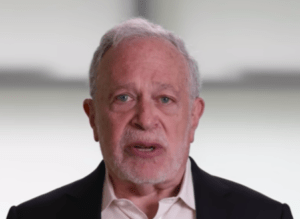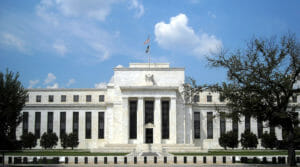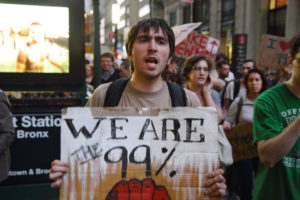The July Jobs Report: Unemployment Hits Historic Low
The size of the labor force increased while GDP continues to grow. Construction workers by DMCA via PX Fuel / CC BY-SA 3.0
Construction workers by DMCA via PX Fuel / CC BY-SA 3.0
It would be hard to imagine a much better jobs report than what we got Friday. The economy generated 187,000 jobs for the month, somewhat fewer than the consensus. The jobs numbers for the prior two months were also revised down by 90,000. At the same time, the unemployment rate edged down to 3.5 percent, just 0.1 percentage point above the half-century low reached in April. We have now have had below 4.0 percent unemployment for the last 18 months. The last time we had a streak this long was in the sixties.
In other times, the slowing job growth and the downward revisions might be bad news, but with unemployment at an extraordinarily low level and inflation remaining a problem, some cooling of the labor market means that the Fed will be less likely to raise interest rates further. The July rate of job creation should be sufficient to keep the unemployment rate from rising and to even pull some additional workers into the labor market.
Other aspects of the report were also positive. There was an increase in the size of the labor force of 152,000, bringing the year-over-year rise to 3.1 million. There had been some concerns that the labor force, as measured by the household survey, was not keeping pace with the rate of job growth reported in the establishment survey. These are now much more closely aligned.
There was a drop of 191,000 in the number of people who reported working part-time involuntarily. That is not huge, but this drop suggests that the 450,000 jump reported for June was just an anomaly, as opposed to the start of a trend.
It looks like workers at the bottom continue to be the biggest gainers.
The share of unemployment due to voluntary quits rose to 14.6 percent, a second consecutive monthly rise. This is a high level, indicating workers are confident enough to quit a job without having a new job lined up already, but it is below the peaks hit last year and also below pre-pandemic peaks.
Wages rose 0.4 percent for the month, bringing the annual rate of wage growth over the last three months to 4.9 percent. This means that workers likely again came out ahead of inflation in July, although the Fed may consider the pace of wage growth to be too rapid, and use it to justify further rate hikes. I’ll come back to this issue later.
And, it looks like workers at the bottom continue to be the biggest gainers. Wage growth for hotel and restaurant workers rose at a 7.3 percent annual rate over the last three months.
This is consistent with the biggest drops in unemployment being for less-educated workers. The unemployment rate for workers without high school degrees fell by 0.8 percentage points to 5.2 percent. For workers with just a high school education, the unemployment rate fell by 0.5 percentage points to 3.4 percent, tying the record low hit in April of 2019.
But the jobs report was not the only good economic news that we’ve gotten in the last couple of weeks. The second quarter GDP report showed GDP growing at a 2.4 percent annual rate. This is solid growth by any measure.
But perhaps even more important than the rate was the composition. Consumption growth slowed to a 1.6 percent rate, after growing at a 4.6 percent rate in the first quarter. Investment made up the gap, rising at a 7.7 percent annual rate. This was driven largely by investment in structures, especially factory construction, which grew at an incredible 94.0 percent annual rate. This is the clean energy and chip boom, resulting from the Inflation Reduction Act and CHIPS Act.
We also got data on second-quarter productivity, which showed it rising at a 3.7 percent rate. This was stronger than most projections, although we have to recognize that quarterly productivity data are highly erratic and subject to large revisions. In the first quarter, productivity fell at a 1.2 percent rate. Nonetheless, we have averaged 1.4 percent annual growth since the pandemic. This is a bit lower than the 1.6 percent rate in the four years preceding the pandemic, but better than the 1.0 percent average over the full decade before the pandemic.
And, the Personal Consumption Expenditure deflator showed somewhat lower inflation than had generally been expected. Both the overall and core PCE rose 0.2 percent in June.
With strong growth, rising real wages, and falling inflation, what’s to worry about? The answer is still inflation, real or imagined. The 4.9 percent annual rate of wage growth shown for the last three months in the Average Hourly Earnings (AHE) series, is around 1.0 percentage point higher than what would be consistent with the Fed’s 2.0 percent inflation target.
Perhaps more importantly, the pace of wage growth is going in the wrong direction from the Fed’s perspective. The annualized three-month rate slowed from 6.4 percent at the start of 2022 to just 3.4 percent in the three months ending with March of this year. Had the rate of wage growth remained at 3.4 percent, or anywhere near it, there would be little reason for concerns about inflation substantially exceeding the Fed’s target going forward, but the acceleration over the last four months can provide grounds for concern.
As inflation slowed this year, wage growth has again exceeded inflation, and workers are seeing real wage gains.
Just to be clear, wages have not driven inflation in the pandemic. Prices substantially outstripped wage growth at the points where inflation was highest in 2021 and 2022. Pandemic-driven shortages were driving up the prices of a wide range of items, leading to a shift from wages to profits.
As inflation slowed this year, wage growth has again exceeded inflation, and workers are seeing real wage gains. There has been some shift back from profits to wages, reversing much of the pandemic-driven rise in profit shares. There is no reason this shift to wages cannot continue and even reverse some of the shift to profits that preceded the pandemic.
However, if wage growth continues indefinitely at a 4.9 percent rate, we will be seeing inflation above the Fed’s 2.0 percent target. Some of us may not care much about the Fed’s inflation target, but Jerome Powell and the Fed care, and they will likely raise rates to try to slow the pace of wage growth.
Fortunately, there are some factors that could cause the Fed to hold off on further rate hikes. The first is that it apparently does not care much about the AHE, preferring instead to focus on the Employment Cost Index (ECI). I don’t quite understand the reason for preferring the ECI. The sample for the AHE is over 600,000 establishments compared to just 15,000 for the ECI. Furthermore, the response rate for the ECI is under 50 percent, compared to more than 90 percent for the AHE.
The ECI holds composition fixed, which can be desirable (I think that generally it isn’t), but it is possible to construct a composition-adjusted AHE. In any case, most of the differences between the AHE and ECI are not driven by changes in composition.
Anyhow, whether rightly or wrongly, the Fed sees the ECI as the better measure of wage growth, and the ECI shows wage growth slowing in the most recent report, which was released last week. Compensation growth in the ECI slowed from a 6.0 percent annual rate in the third quarter of 2021 to just 4.0 percent in the last quarter. (This is for the private sector.) If we just look at the wage component of compensation, the slowing was even sharper, from 6.4 percent to 4.0 percent. So, if we rely on the ECI we can feel comfortable both that wage growth is clearly slowing and that the current pace is close to being consistent with the Fed’s 2.0 percent inflation target.
This is similar to the story we get from the rate of compensation growth in the BLS productivity and cost data. The quarterly data are sufficiently erratic to make them pretty much worthless, but taking the year over year rate of growth in hourly compensation, there was a decline from 6.4 percent in the first quarter of 2021 to 3.7 percent in the most recent quarter. This also would be in the ballpark of a pace consistent with the Fed’s inflation target.
We can also look to private data sources for insights. The labor matching firm Indeed has been keeping track of the wages offered to newly hired workers. This series has also shown a marked slowing, with the year over year pace of wage growth falling from 9.1 percent in January of 2022 to 5.3 percent in May of this year. It is now expected to approach the pre-pandemic pace by the end of this year or early 2024
If we allow that the wage picture is somewhat ambiguous, there is solid evidence of inflationary pressure diminishing in other areas, which should give the Fed room to wait. Most notably, we know that rental inflation will continue to slow based on indexes of marketed units.
The CPI and PCE both capture the rents of all occupied units, but this means that they do not pick up current conditions in the rental market, since most units do not come on the market in any given month. However, the indexes for marketed units lead the CPI and PCE indexes by close to a year. These indexes show sharply lower rental inflation, with year-over-year rates near zero in some indexes. This means that the CPI and PCE rental indexes will continue to slow through 2023 and into 2024. Rent was a huge factor in the run-up in inflation in 2021 and 2022. It will now be going the other way and slowing inflation.
The biggest threat to the economy at this point is that the Fed has already, or will soon, go too far with its aggressive rate hikes and push the economy into a recession.
In the same vein, the price of new and used cars were huge factors in pushing inflation higher, as supply chain problems sharply limited production. Now that that these supply chain problems have mostly been overcome, both used and new vehicle prices should be headed lower.
This is also true with other products where there were supply chain issues. The Kansas City Federal Reserve Bank just released a paper that showed reduced supply chain pressures, as measured by a New York Fed index, strongly predicted changes in goods prices six months ahead of time. This suggests that we should see further declines in prices in a range of goods, like car parts, furniture, appliances, and other areas where supply issues pushed up prices in 2021 and 2022.
We also can also look to see whether the second quarter uptick in productivity was just a blip or may actually mean that we are on a faster productivity growth path. Again, we know the data are extremely erratic, but it will be worth seeing how the quarter’s figure holds up through revisions. Also, the decline in aggregate hours reported for July, along with early indications of strong growth in the third quarter, indicate that we may on the way to another good productivity quarter.
Taken together, this suggests that we will see core inflation slowing through the rest of 2023, although there could be some upward blips due to gas prices. That means that the Fed will not have to worry about the dreaded wage-price spiral for the time being even if the AHE turns out to be the better indicator of the current pace of wage growth.
The biggest threat to the economy at this point is that the Fed has already, or will soon, go too far with its aggressive rate hikes and push the economy into a recession. Chair Powell and the other members of the Fed’s Open Market Committee are well aware of this risk. With so much good news on the inflation front at the moment, they have the luxury of being able to sit back and see where things stand.
Your support matters…Independent journalism is under threat and overshadowed by heavily funded mainstream media.
You can help level the playing field. Become a member.
Your tax-deductible contribution keeps us digging beneath the headlines to give you thought-provoking, investigative reporting and analysis that unearths what's really happening- without compromise.
Give today to support our courageous, independent journalists.






You need to be a supporter to comment.
There are currently no responses to this article.
Be the first to respond.